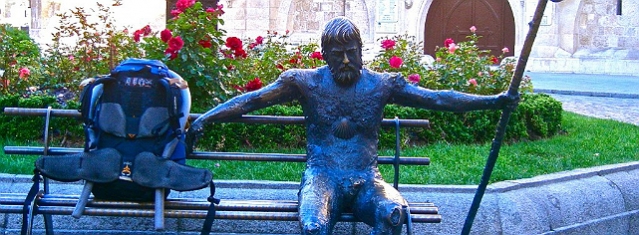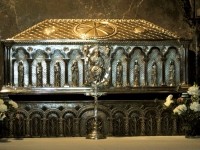Travel
Routes of Santiago in Spain included on UNESCO World Heritage List
Spain have 44 entries in the list

Pilgrim Monument
USPA NEWS -
The 39th Session of the UNESCO World Heritage Committee held in Bonn (Germany) has included the Routes of Santiago de Compostela, in the Northern Iberian Peninsula, on the World Heritage List. With 44, Spain is the country with the third-highest number of entries on the list.
After receiving this news, the Spanish Minister for Education, Culture and Sport, Iñigo Mendez de Vigo, wished to express "great satisfaction over this recognition from UNESCO, mainly because this Spanish entry is based on joint efforts and cooperation between five autonomous regions (La Rioja, Cantabria, the Basque Country, Asturias and Galicia) and the Spanish State through this ministerial department."
Iñigo Mendez de Vigo congratulated "the technical teams from the ministerial department and the regional governments, led in this case by the Regional Government of the Principality of Asturias, on a job well done." The Spanish Minister stressed that this entry is "particularly important" because it formed part of the team led by Marcelino Oreja, Secretary-General of the Council of Europe, when he promoted recognition of the Route of Santiago de Compostela as the first European Cultural Route in 1987.
"The historical origins of the pilgrim's route to Santiago de Compostela, represented by the Routes of Northern Spain, have been recognised by UNESCO, although it is my wish for them to be recognised by all the pilgrims and tourists who enjoy the heritage of Spanish culture," explained Iñigo Mendez de Vigo. With 44, Spain is the country with the third-highest number of entries on the World Heritage List.
This entry involving the Routes of Santiago de Compostela in the Northern Iberian Peninsula is an extension of the entry corresponding to the French Way, which was previously recognised by UNESCO in 1993. An additional four routes have now been added, which form part of the Route of Santiago de Compostela: The Camino Primitivo, which begins in Oviedo; the Camino Costero, measuring 936 kilometres in length; the Camino Vasco-Riojano, which begins in Irun, and the Camino de Liebana, a branch route that links the Camino with the Santo Toribio Monastery.
This extension aims to explain the origin of the pilgrim's route to Santiago de Compostela. The Routes of Northern Spain represent the early routes of the pilgrimage to Santiago de Compostela, with a direct link to the discovery of the tomb of St. James and its promotion by the Kingdom of Asturias during the 9th Century. As from the 11th Century, they were replaced by the French Way as the main route.
Over its 11 centuries of history, the Route of Santiago de Compostela has been one of the most influential and recognised communication routes in Europe. This route also became an important trade route and a means of spreading knowledge, via which elements of social, economic and cultural life were introduced into northern Spain, later leading to the appearance of cities and towns, in which were built civil and religious buildings that followed artistic styles coming from other European countries.
Through a process of constant evolution and due to its spiritual value, the Route of Santiago de Compostela comprises a series of historical heritage assets of the highest order, a natural landscape of exceptional beauty and intangible heritage that includes the oral narrative that kept, and continues to keep, the route followed by pilgrims to Santiago de Compostela alive. It is a meeting place that has fostered constant cultural dialogue between the people who travel the route and the towns and villages through which it passes.
Liability for this article lies with the author, who also holds the copyright. Editorial content from USPA may be quoted on other websites as long as the quote comprises no more than 5% of the entire text, is marked as such and the source is named (via hyperlink).






